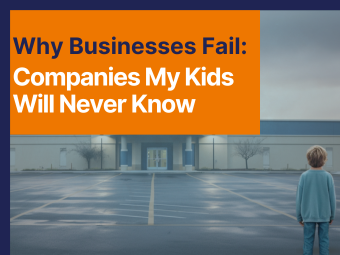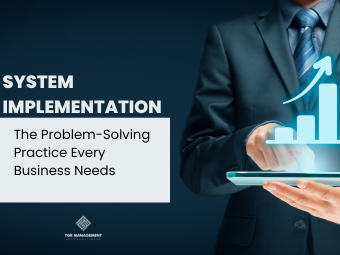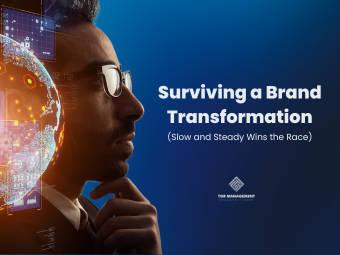
When successful companies get to a certain level of growth, they can start to seem infallible. As if they’ve hit on some spectacular magic that will keep their company’s success going for generations to come. But these giants are not foolproof. They are just as susceptible to failure as newer and smaller businesses. We know because it’s happened again and again.
I think about my kids sometimes when I reflect on these companies. The experiences they won’t have and the products they won’t see. From picking out a Blockbuster movie and candy from the video store to flipping through the Sears catalog. But why? How is it possible that a successful business can collapse seemingly out of nowhere?
The truth is, it’s not out of nowhere. No matter your size or history, failure to adapt to new technologies, poor asset management, and a lack of flexibility can cause systematic failures that result in a company filing for bankruptcy. Let’s talk about why businesses fail and what you can do to avoid making the same mistakes, including failure to adapt, profit over purpose, and that age-old business killer: hubris.
Failure to Adapt
Regardless of how great your company is or how great your product or service is, failure to adapt can be a death blow. This can manifest in a few different ways. Failure to adapt to changing technologies and failure to adapt your products or services to stay up-to-date with standards and expectations.
An example of a failure to adapt to all three is Blockbuster. Once a giant in the video rental industry, Blockbuster was slow to recognize the threat posed by online streaming services like Netflix. And by the time it did, it was too late. The company’s sizeable physical footprint, once an advantage, became a liability as the market moved online.
Ironically, one of its competitors, Family Video, outlasted Blockbuster by 10 years, largely due to them owning the real estate housing their stores, helping them avoid unsuccessful leasing negotiations. It’s easier to keep your doors open when the doors are yours, to begin with. But even with this 10-year boost, this business shut down its remaining rental locations during the pandemic.
The industry-wide shift toward streaming services changed the game completely. And although Family Video’s style of operation and management resulted in fewer losses due to this shift, the pandemic made brick-and-mortar video rentals an official thing of the past.
Profit over Purpose
It is incredibly easy to step aboard the “money train” and find yourself caught up in its momentum. Of course, most people don’t spend the time, money, and resources to start a for-profit business with the expectation of barely scraping by. However, it does most businesses a disservice to say that their only reason for existence is to “make money”.
So with that in mind, let me ask you a question: do you remember Circuit City?
There are younger Millenials and Gen Z kids who may not have even heard of Circuit City, but it was once the second-largest electronics retailer in the US. What went wrong?
Circuit City was known for its wide selection of products and its commissioned sales staff. And, in 07 (right before the great recession), they laid off 3,400 of their highest-paid employees. There were a few reasons to do this – they were attempting to keep up with stores such as Best Buy who offered better pricing and were engaging in more aggressive marketing strategies.
But this move removed one of their bigger differentiators. Combined with a failure to adapt to the e-commerce trend and a lack of consistent vision resulted in Circuit City fizzling toward bankruptcy in 2008 and shutting their doors for good in 09.
The Worst Case Scenario
In 2018, Sears, once a retail giant, filed for bankruptcy. It’s perhaps the most dramatic example of a company’s downfall.
Sears’ decline was due to a perfect storm of factors, including increased competition, a large physical footprint, and a failure to adapt to the rise of e-commerce. The company’s decision to sell off its most profitable assets, such as the Craftsman tool brand, also contributed to its downfall. But perhaps the most significant factor was the company’s failure to invest in store upkeep and the online shopping experience.
Let’s drink this in for a moment. A store famous for its catalogs failed to develop an online catalog and adapt its shopping experience to the online marketplace. The irony never ceases to amaze me. And it moves us toward my final point: hubris.
Hubris: Why History Repeats Itself
You may have reached this point and found yourself thinking, “Circut City, Sears, and Blockbuster? Everyone already knows these stories.” And yet… even though we’re all aware, it keeps happening.
Bed Bath and Beyond is another example of a company that acted in hubris. They overexpanded and didn’t invest in e-commerce and focused on strategies to increase foot traffic (oh, the coupons!) rather than examining their operations and coming up with short-term and long-term strategies to pull them out of their hole.
I’ve got a million examples. Kodak not rolling over to digital fast enough despite being the first to come out with a digital camera. RadioShack: too many stores, failure to stay relevant. All of the other examples I’ve shared today.
How to Avoid These Mistakes
Have I thoroughly depressed you? That wasn’t my goal. In the face of these cautionary tales, it’s clear that the path to enduring success lies not in size or past victories but in addressing, understanding, and learning from these failures.
Failure to adapt, profit over purpose, and hubris. This seems to be the fatal combination of circumstances that push companies away from success and toward closing their doors for good. Refusing to take good advice, refusing to learn from the mistakes of others and recognize the need to change and adapt, and forgetting the reason they found success in the first place.
I see smaller organizations and non-profits successfully navigate the changing landscape all the time. What they have in common is what the larger companies we’ve discussed so far have failed to do.
Embracing innovation, implementing systems, incorporating automation, listening to your clients, and communicating with your team are all key factors to success. This means fostering a culture of innovation that encourages new ideas and approaches, ensuring you’re not overextending your resources, and of course, looking to the past and future.
The business landscape is littered with the remnants of companies that failed to heed the lessons of their predecessors. By studying these failures, we can avoid making the same mistakes and take the right steps to ensure our companies survive for generations to come.
Tiffany Rosik, founder and CEO of TGR Management Consulting, specializes in guiding Fortune 1000 companies away from the pitfalls that have led to the downfall of once-thriving businesses. Tiffany’s approach goes beyond traditional consulting. She focuses on aligning business and technology initiatives with the ever-changing market dynamics to foster growth and adaptability. Connect or follow Tiffany Rosik on LinkedIn.




